Neufundland
(Neufundland und Labrador)
|
|
|
|
| Übersicht – Contents: | |
Diese Seite ist Teil des Projektes
Neufundland
(Neufundland und Labrador)
|
|
|
|
| Übersicht – Contents: | |
Flagge – Flag: |
|
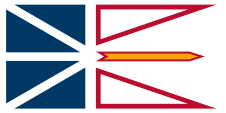 |
Provinzflagge – flag of the province, Seitenverhältnis – ratio = 1:2, Quelle/Source: Corel Draw 4   |
sonstige Flagge – other Flag: |
|
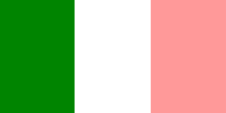 |
Flagge der Unabhängigkeitsbewegung von Neufundland – flag of the Independence Movement of Newfoundland, Quelle/Source, nach/by: Wikipedia (D) |
historische Flaggen – historical Flags: |
|
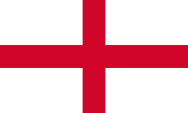 |
1583, England proklamiert die Vorherrschaft über Neufundland – England proclaims supremacy over Newfoundland, Flagge von England – flag of England, Quelle/Source: Die Welt der Flaggen   |
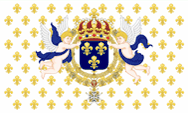 |
1662–1713, Flagge Frankreichs – flag of France, Quelle/Source, nach/by: Sodacan [CC BY-SA 3.0], via Wikimedia Commons  |
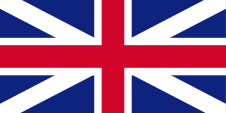 |
1713–1801, Union Flag → quasi Nationalflagge/national flag, Flagge von Großbritannien – flag of United Kingdom, Seitenverhältnis – ratio 1:2, Quelle/Source, nach/by: Die Welt der Flaggen |
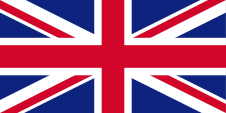 |
1801–1931, 1934–1980, Union Flag → quasi Nationalflagge/national flag, Flagge von Großbritannien – flag of United Kingdom, Seitenverhältnis – ratio 1:2, Quelle/Source, nach/by: Wikipedia (EN), thecanadianencyclopedia.ca    |
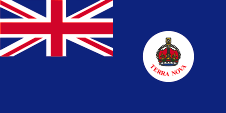 |
1878–1904, Flagge der Regierung (Staatsflagge) – flag of the government (state flag), Seitenverhältnis – ratio = 1:2, Quelle/Source, nach/by: World Statesmen |
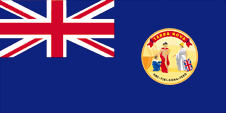 |
1904–1931, Flagge der Regierung (Staatsflagge) – flag of the government (state flag), Seitenverhältnis – ratio = 1:2, Quelle/Source, nach/by: Wikipedia (D) |
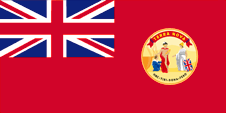 |
1904–1931, inoffizielle National- und Handelsflagge des britischen Dominions Neufundland – unofficial national and merchant flag of the British Dominion of Newfoundland, Quelle/Source, nach/by: Wikipedia (D) |
 |
1931–1934, offizielle Staats-, National- und Handelsflagge des britischen Dominions Neufundland – official state, national and merchant flag of the British Dominion of Newfoundland, Quelle/Source, nach/by: Wikipedia (D)    |
 |
1934–1980, Flagge der Regierung (Staatsflagge) – flag of the government (state flag), Seitenverhältnis – ratio = 1:2, Quelle/Source, nach/by: Wikipedia (D)    |
Bedeutung/Ursprung der Flagge – Meaning/Origin of the Flag: |
|
| Die heutige Flagge von Neufundland wurde erstmals am 28.05.1980 gehisst. Sie ist ein neuerer Entwurf, denn zuvor wurde ein Red Ensign mit dem Union Jack in der Oberecke und einem Badge im fliegenden Ende verwendet. Wahrscheinlich stellt sie einen etwas verunglückten Versuch dar, eine Art neuen Union Jack zu kreiren, der die Elemente Irlands, Englands und Schottlands verbindet. Möglicherweise ist es auch Versuch einen von links nach rechts laufenden Farbverlauf in Blau, Weiß und Rot einzubringen, um das französische Element der Provinz zu betonen. | The
today's flag of Newfoundland was hoisted for the first time on 28th of May
in 1980. It is a newer design, because before was in use a Red Ensign with
the Union Jack in the upper canton and a badge in the flying end. Probably is this flag a some infelicitous try to create a kind of a new Union Jack, which combines the elements of Ireland, England and Scotland. May be that this is a try to include a colour's sequence in blue, white and red from the left to the right, to accentuate the French element of the province. |
| Bis 1922 hätte von den Dienststellen der Provinzen offiziell der britische Union Jack, die sogenannte Royal Union Flag, verwendet werden müssen, oder aber (ab 1922 im Prinzip nur noch) die kanadische blaue Dienstflagge, der typische Britische Blue Ensign, mit dem Wappenschild Kanadas im wehenden Ende. Dennoch hatten die Provinzbehörden eigene Siegel und später auch Wappen, die eigenmächtig im wehenden Ende auf der blauen Dienstflagge platziert wurden. Für dieses Verfahren hätte eine Genehmigung der britischen Behörden vorliegen müssen, was jedoch nicht der Fall war, aber toleriert wurde. Privatpersonen hatten den Union Jack zu verwenden und ab 1892 den sog. Red Ensign, die rote Version der kanadischen Flagge mit dem Union Jack in der Oberecke und dem Wappen Kanadas im wehenden Ende. |
Until the year 1922 there had officially been used, the British Union Jack, the so-called
Royal Union Flag, by the departments of the provinces, or (from 1922 nearly only) the Canadian
blue official flag, the typical British Blue Ensign, with the coat of arms of
Canada in the flying end. Nevertheless, the provincial authorities had their own seals and later also coats of arms, which were unauthorized placed in the flying end of the blue official flag. A permit should have been approved by the British authorities for this procedure, this was not the case, but was tolerated. Private individuals had to use the Union Jack and from 1892 the so-called Red Ensign, the red version of the Canadian flag with the Union Jack in the upper corner and the coat of arms of Canada in the flying end. |
| Im Jahre 1904 legte man sich sogar einen eigenen Red Ensign zu, der das damalige Badge der Provinz im wehenden Ende zeigte. Ein klarer Verstoß gegen das Ensign-System, denn ein Red Ensign wird von der britischen Admiralität zusätzlich zum Blue Ensign verliehen, und das war nicht der Fall gewesen. Die historischen Flaggen der Provinz folgen aus der Historie heraus britischen Vorgaben. Es gelten: Blau = Pantone 280, Rot = Pantone 186, Gelb = Pantone 116. |
They introduced even an
own Red
Ensign in 1904, which showed the then badge of the province in the flying
end. A clear violation of the Ensign system, because a Red Ensign is always awarded by the British Admiralty in addition to the Blue Ensign, and that did not happen. The historical flags of the province follow British specifications due to history. They are: Blue = Pantone 280, Red = Pantone 186, Yellow = Pantone 116. |
| Im Zuge der allmählichen Trennung Kanadas von Großbritannien verlor das Ensign-System seine Bedeutung und man schuf teilweise neue Provinzflaggen, die von Behörden und Dienststellen der Provinzen und auch von Privatpersonen verwendet werden dürfen. So führte Neufundland 1980 die heutige Flagge ein. | In
the course of the gradual separation of Canada from the United
Kingdom the ensign system lost its
meaning and they created partially new provincial flags, which may
be used by authorities and departments of the provinces and also
by private individuals. In this way, Newfoundland introduced the current flag in 1980. |
| Quelle/Source: Volker Preuß, Flaggen Enzyklopädie, World Statesmen, Die Welt der Flaggen | |
Wappen – Coat of Arms: |
|
 |
Wappenschild Neufundlands – escutcheon of Newfoundland, Quelle/Source, nach/by: Wikipedia (D) |
Bedeutung/Ursprung des Wappens – Meaning/Origin of the Coat of Arms: |
|
| Es gibt ein reguläres Wappen für Neufundland, mit Postament, Schildhaltern, einer Wappenkrone und dem Motto. Hier dargestellt ist nur der zentrale Teil des Wappens, der Wappenschild. | There is a regular coat of arms for Newfoundland, with a console, shield holders (supporters), withe a crest and the motto. Here is only depicted the central part of the coat of arms, the escutcheon. |
| Das Wappenschild Neufundlands ist einfarbig rot, gevierteilt durch ein weißes Kreuz, dessen Gevierte den goldenen britischen Löwen und das silberne schottische Einhorn zeigen. Löwe und Einhorn sind normalerweise die Schilhalter des kanadischen Wappens, und könnten von dort entlehnt sein. Die gesamte Erscheinung des Wappens erinnert an dänisches Design, möglicherweise ein Hinweis auf die frühe normannische Entdeckung und Besiedlung. | The
escutcheon of Newfoundland is single coloured red, quartered by a white cross,
its squares show the golden British lion and the silvery Scottish unicorn.
Lion and unicorn are normally the supporters of the Canadian coat of arms and could be borrowed from there. The whole appearance of the scutcheon remembers Danish design, possibly a hint at the early Norman discovery and settlement. |
| Quelle/Source: Volker Preuß, Wikipedia (D) | |
Landkarte – Map: |
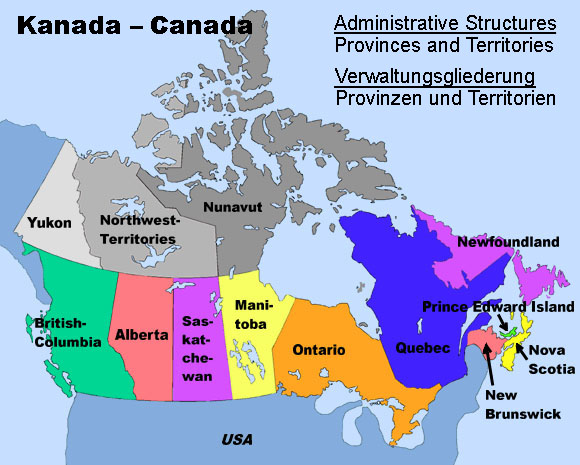 |
| Landkarte/Map: Volker Preuß |
Zahlen und Fakten – Numbers and Facts: |
|
|
|
|
|
|
|
|
|
|
|
|
|
|
|
| ca. 1000
· das heutige Neufundland wird vom Normannen Leif Erikson entdeckt, betreten
und "Markland" genannt 1497 · Giovanni Caboto (John Cabot), ein italienischer Seefahrer in Diensten Englands entdeckt Labrador, Neufundland und Kap Breton; Neufundland wird in den folgenden Jahren durch die reichen Fischgründe und als "neu gefundenes Land" (→ Neufundland) in Europa bekannt, dadurch kommt es zur Besiedlung durch Europäer 1583 · Elisabeth I. Königin von England proklamiert die Oberherrschaft über Neufundland 1662 · Frankreich setzt einen Gouverneur auf der Insel Neufundland ein 1670 · englische Pelzhändler gründen die Hudson's Bay Company (HBC), die HBC kolonisiert in der Folgezeit ganz Kanada zwischen Neufrankreich den Rocky Mountains, Labrador und dem Nordrand der Hudson-Bucht 1713 · Friede von Utrecht, Frankreich muss Neubraunschweig, Neuschottland und die Insel Neufundland an Großbritannien abtreten 1763 · Friede von Paris, Frankreich muss alle nordamerikanischen Besitzungen an Großbritannien (Britisch-Nordamerika) abtreten, außer St. Pierre und Miquelon 1824 · Neufundland wird britische Kronkolonie 1839 · Beginn der Erforschung der Halbinsel Labrador durch die Hudson's Bay Company 1855 · Neufundland wird britisches Dominion (Kolonie mit eigenem Parlament) 1869 · die Hudson's Bay Company überträgt alle ihre territorialen und Hoheitsrechte an das britische Dominion Kanada 1927 · Neufundland wird durch Anschluss von Teilen des seit 1912 zu Québec gehörenden ehemaligen Ungava-Territoriums (Halbinsel Labrador) nach Westen vergrößert 1934 · Neufundland wird wegen wirtschaftlicher Probleme wieder durch Großbritannien verwaltet 1939–1945 · die USA errichten im britischen Dominion Neufundland Militärstützpunkte 31.03.1949 · Neufundland schließt sich nach Volksabstimmung als 10. Provinz dem Staat Kanada an, die US-Militärstützpunkte bleiben erhalten 2001 · die Provinz wird umbenannt in "Neufundland und Labrador" |
| ca. 1000
· the today's Newfoundland gets discovered, and named "Markland" by
the Norman Leif Erikson, who debarked there 1497 · Giovanni Caboto (John Cabot), an Italian seafarer in the service of England discovers Labrador, Newfoundland and Cape Breton; Newfoundland becomes well known in Europe in the following years by the abundant fishing areas and as "new found land" (→ Newfoundland), with following settlement by Europeans 1583 · Elisabeth I. Queen of England proclaims the supremacy over Newfoundland 1662 · France establishes a governor on Newfoundland Island (Terre Neuve) 1670 · English furriers establish the Hudson's Bay Company (HBC), the HBC colonizes in the afteryears whole Canada between New France, the Rocky Mountains, Labrador and the northern part of the Hudson Bay 1713 · Peace of Utrecht, France has to cede the today's New Brunswick, Nova Scotia and the Island of Newfoundland to United Kingdom 1763 · Peace of Paris, France has to cede all its north american possessions to United Kingdom (British Northern America), except St. Pierre and Miquelon 1824 · Newfoundland becomes a British crown colony 1839 · start of the research of the Labrador Peninsula by the Hudson's Bay Company 1855 · Newfoundland becomes a British Dominion (colony with own parliament) 1869 · the Hudson's Bay Company cedes all their territorial rights and prerogatives to the British Dominion of Canada 1927 · Newfoundland gets enlarged westward by annexion of parts of the since 1912 to Québec belonging former Ungava Territory (Labrador Peninsula) 1934 · Newfoundland is administrated again by United Kingdom because of economical problems 1939–1945 · the USA build military bases in the British Dominion Newfoundland 31st of March 1949 · Newfoundland joines after plebiscite as 10th province to the State of Canada, the USA military bases stay 2001 · the province is renamed in "Newfoundland and Labrador" |
| Quelle/Source: Atlas zur Geschichte, World Statesmen, Wikipedia (D), Discovery '97 |
Ursprung des Landesnamens – Origin of the Country's Name: |
|
| Nachdem Giovanni Caboto (John Cabot), ein italienischer Seefahrer in Diensten Englands Labrador im Jahre 1497 entdeckt hatte wurde die Küste des Landes Ziel vieler nachfolgender Expeditionen, auch von Fischern. Die reichen Fischgünde wurden zum Anziehungspunkt englischer, portugiesischer und spanischer Fischer, welche die Region als beim "neu gefundenen Land" (→ Neufundland) in Europa bekannt machten. | After Giovanni Caboto (John Cabot), an Italian navigator in the service of England discovered the coast of Labrador in 1497, the coast of the country became to a destination of many subsequent expeditions, including fishermen. The rich fishing grounds became the center of attraction for English, Portuguese and Spanish fishermen, who made the region known in Europe as close to the "new found land" (→ Newfoundland). |
| Quelle/Source: Volker Preuß | |